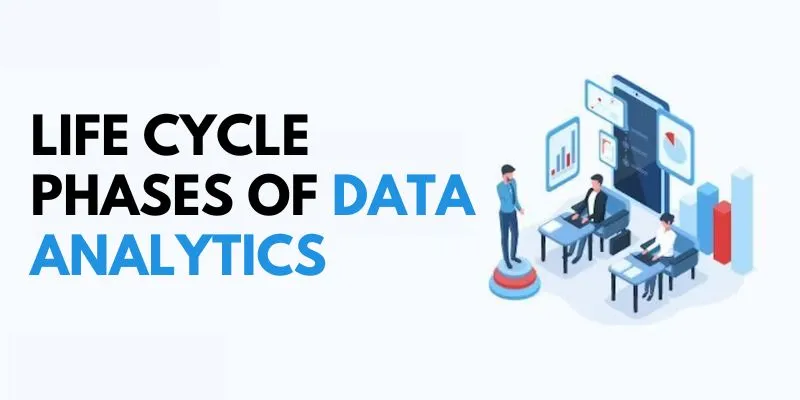
In the ever-expanding landscape of data-driven decision-making, understanding the life cycle phases of data analytics is crucial. This blog serves as a comprehensive guide to navigating through the intricate stages of data analytics, providing insights for professionals and enthusiasts alike. Whether you’re exploring the field or seeking to deepen your expertise, a profound comprehension of the life cycle phases is essential for unlocking the transformative power of data analytics.
Life Cycle Phases of Data Analytics
Building the Analytical Skill Set
Embarking on the journey of data analytics begins with foundational training. Data Analytics Training in Chennai and similar programs empower individuals with the essential skills required to collect, clean, and analyze data effectively. This section explores the importance of laying a solid foundation through comprehensive training.
Setting the Analytical Stage
Before delving into data, it’s crucial to define clear objectives and formulate pertinent questions. This phase involves collaboration between data analysts and stakeholders to ensure that the analytical process aligns with the overarching goals of the organization.
Aggregating the Raw Material
The data collection phase involves gathering relevant data from various sources. This section explores best practices for data collection, emphasizing the importance of obtaining high-quality, diverse data sets that align with the analytical objectives.
Complement your understanding by exploring related courses such as the Data Science Course in Bangalore and R Programming. These programs provide in-depth insights into advanced analytics techniques and programming languages essential for data analysis.
Refining the Raw Material
Raw data often requires refinement before analysis. This phase involves cleaning and preparing data for analysis, addressing missing values, outliers, and inconsistencies. Efficient data processing ensures that subsequent analyses are based on accurate and reliable information.
Unveiling Insights from the Data
In the exploration phase, data analysts employ various statistical and visualization techniques to identify patterns and trends within the data. This section delves into the tools and methodologies used to extract meaningful insights, guiding analysts through the exploration process.
Transforming Patterns into Decisions
Building on the insights uncovered in the exploration phase, the analysis phase involves extracting actionable insights. This section explores advanced analytical techniques, including predictive modeling and machine learning, to transform data patterns into informed decisions.
Telling a Compelling Analytical Story
The ability to communicate insights effectively is a crucial aspect of data analytics. This phase involves creating compelling visualizations and reports that convey complex analytical findings in a clear and accessible manner, facilitating understanding among diverse stakeholders.
Elevate your visualization skills by exploring courses like the R Programming Course in Coimbatore . These programs provide hands-on experience in creating interactive and impactful visualizations, enhancing your ability to communicate analytical insights.
Transforming Insights into Strategic Value
Interpreting analytical findings within the broader business context is pivotal. This section explores how data analysts collaborate with decision-makers to translate insights into strategic actions, ensuring that the analytical process contributes meaningfully to organizational goals.
Driving Change through Data-Driven Decisions
The implementation phase involves integrating insights into day-to-day operations. This section guides organizations through the process of incorporating data-driven decisions into their workflows, fostering a culture where analytics informs and enhances every aspect of business operations.
Adapting to Evolving Analytical Needs
The life cycle of data analytics is iterative. This phase emphasizes the importance of continuous improvement, where feedback from implemented insights informs future iterations of the analytical process. Data analytics is dynamic, and organizations must evolve their approaches to stay ahead.
Comprehending the life cycle phases of data analytics transcends theoretical knowledge; it serves as a practical roadmap for converting raw data into strategic insights. This process is pivotal as organizations progressively acknowledge the transformative power inherent in data. Professionals armed with a holistic understanding of the analytical life cycle emerge as invaluable contributors to organizational success.
The life cycle of data analytics typically involves stages such as data collection, cleaning, exploration, modeling, and interpretation. Each phase plays a crucial role in the journey from raw data to actionable insights. Understanding these stages enables professionals to navigate complexities efficiently, ensuring the extraction of meaningful information from vast datasets.
In a business landscape increasingly reliant on data-driven decision-making, individuals well-versed in the data analytics life cycle emerge as key assets. They possess the skills to not only manage data but also to derive strategic value from it, driving innovation, efficiency, and competitiveness for their organizations. In essence, this knowledge is a practical tool for professionals seeking to harness the full potential of data in today’s data-centric business environment.
For individuals seeking to embark on or advance their careers in data analytics, the journey begins with foundational training programs like Microsoft Power BI Training in Chennai . These programs provide the skills and knowledge necessary to navigate each phase of the data analytics life cycle, ensuring that professionals can contribute meaningfully to the data-driven future of business.
Read more: Data Science Interview Questions and Answers
